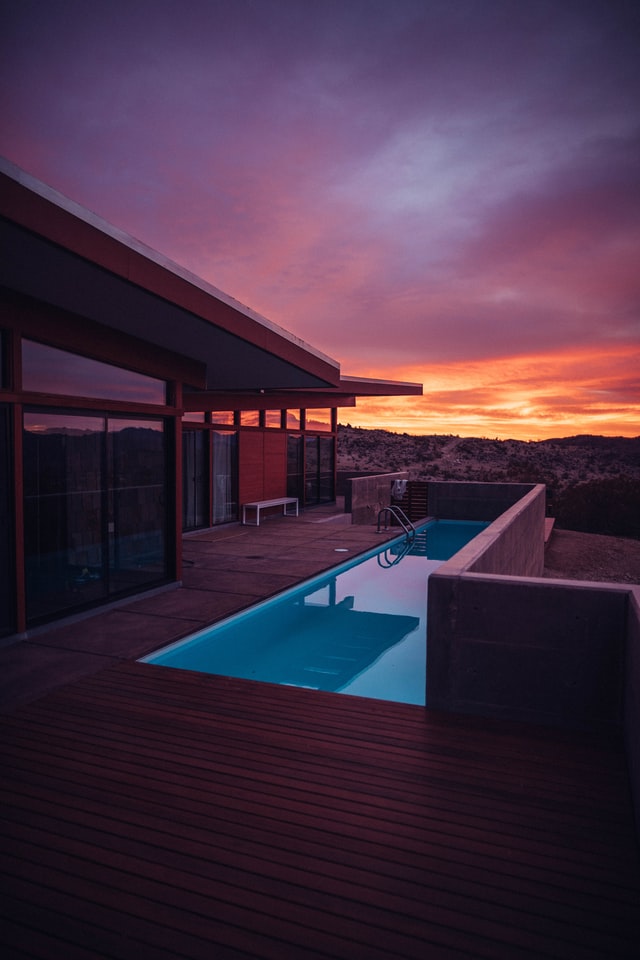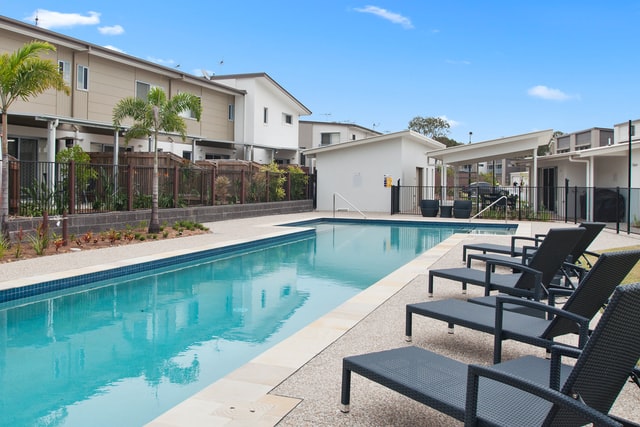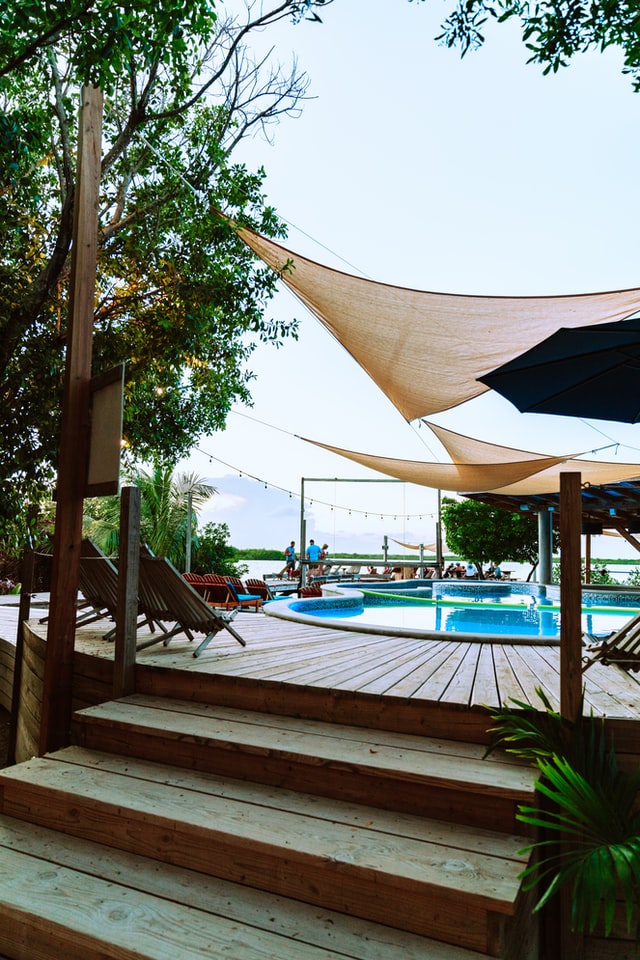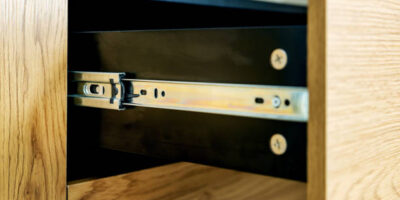Generally, putting up an inground pool needs much more consideration than the pool alone. Knowing this, you have to come up with an idea of what you will be doing on the space around it. Most people usually consider to put up a deck around the pool. In case this idea sounds good to you, here are the three basic steps on how to build a deck around an inground pool.
Pool Decking Designing and Installation Tips
Basically, a backyard swimming pool gives a refreshing summer experience. The water is the main thing here but the decking around the pool is actually the one that identifies its fitness within the landscape. Moreover, the pool decking also determines the safety of the swimmers. It should generally provide a secure pathway around pool ladders, slides, and diving boards.
Below are some pool decking designing and installation tips that you must have to learn:
Pool decking material
Normally, we tend to be barefooted around the pool so, in terms of pool decking, it is very essential to choose a material that is not slippery or does not absorb extra heat. A safe walkway must be provided for swimmers even in times of having a sopping wet surface. Moreover, it is actually ideal that the surface has a pleasant feel under the feet while offering comfort. Here are the following pool decking materials that you must consider:
1. Poured concrete
This is one of the materials to consider the process of how to build a deck around an inground pool. The poured concrete has been generally for more years due to its durability and water-resistant property. Walking over the poured concrete pool deck on a barefoot without getting slipped is actually possible.
Pros:
- Easily formed and poured over your preferred shape
- May be applicable in forming curves and geometric shapes
- Generally, affordable which cost around $5 to $6 per square foot if it is installed by professional contractors. Meanwhile, a do-it-yourself pool deck may usually cost $2 to $3 per square foot. However, keep in mind that this cost only applies to the concrete material itself.
Cons:
- Areas larger than 6 x 6 ft. is not suitable for this poll decking material in a do-it-yourself method
2. Pre-cast cement pavers
Basically, the pre-cast cement paver is the most common alternative option to the poured concrete material. This pool decking material generally comes in various shapes of geometrical patterns like rectangles, squares, and octagons.
Pros:
- The pre-cast cement pavers are highly available in gray and earthen shades
- Installation can be easily done through a DIY method
- Non-slip material
- Very affordable which comes for $2 to $4 per square foot
Cons:
- Has the ability to sink over an excavated sand or gravel if the installation is not correct
3. Brick
Installing through the same process with that of the pre-cast cement pavers, the brick is also a good DIY alternative. This pool decking material is suitable over the sand in order to prevent the movement of material. Moreover, the brick material offers a classical landscape look making it really good for historic houses. But, it is a little bit expensive and hiring a professional on its installation may also incur another charge.
Pros:
- Highly durable
- With a variety of color choices and patterns for installation
Cons:
- Requires more time for installation due to the small brick structure
- Dark-colored bricks may generally absorb heat thus making hot underfoot
4. Wood
Another material on how to build a deck around an inground pool is the wood which is actually a smooth option for giving a wonderful feeling underfoot. However, not all wood materials are generally suitable for use in making pool decks. Going for this material when you want to proceed on doing the ways on how to build a deck around an inground pool demands for good exterior woods.

Generally, pool decking having wood as the material demands for building a floor joist system. This is actually a part of the decking in which the decking boards must be installed. Moreover, the DIY procedure on how to build a deck around an inground pool using wood as the material will cost around $3.50 to $5 per square foot. However, this cost may usually vary based on the species of wood.
Pros:
- The best way for updating or remodelling the existing concrete or brick pool deck
- The material of choice for stair constructions and building decks around the above-ground pools
Cons:
- Maintenance requires the yearly application of protective sealant
- Also demands refinishing like surface sanding down every three to four years
Types of wood for pool decking
Generally, among the other materials used in building a deck around an inground pool, the wood is highly different. Most popular wood types being used as pool decks are the cedar, pine, mahogany, and teak. Here are the differences between each wood type:
PINE
It is actually the cheapest type but also the weakest one. Once treated, this type of wood becomes generally better. Aside from that, the pinewood does not absorb any heat so foot burn is not a problem. However, using this wood type in making the way on how to build a deck around an inground pool highly demand more maintenance.
TEAK
Compared to pine wood, the teak is generally more durable and requires little maintenance. It is actually resistant to bugs and growth of molds. Moreover, using this wood type as pool deck material generally offers an excellent mixture of style and value.
CEDAR
Generally, the cedar wood is more durable compared to pine, but it is less than the teak. It is highly resistant to pests and weather conditions making it looks really beautiful. Overall, the cedar wood is the cheap alternative to teak having most of its properties.
MAHOGANY
Among the other wood type for pool decking, mahogany wood is extremely beautiful and really elegant. It is actually the most durable option among all the wood types but it is very expensive.
5. Stone Tile
Actually, this pool decking material is an upscale one which is highly available naturally in various choices. This material for building pool decks includes travertine, sandstone, and limestone. Generally, the stone tile offers a natural look over the landscape.
However, please bear in mind that the unglazed stone tile should be the one applied in a pool setting as the glazed type becomes slippery when wet. In addition, when you are after the underfoot comfort, it is highly recommendable to opt for the lighter shades of stone tile as they do not absorb much heat.

Pros:
- Provides a sheer good appearance
- Gives a graceful surface which is highly suitable for lounging and entertaining
- The soft and smooth feel underfoot
Cons:
- Very expensive
6. Surface coatings
Basically, this surface coating has epoxy or a mixture of sand, polymer resins, and cement. It generally permits the tight bonding over concrete surfaces and covers the old existing concrete pool decking. The surface that it provides is highly non-slip and actually resistant on water, pool chemicals, and even on damaging UV rays.
Moreover, updating and sealing this pool deck material requires the use of spray-on and roll-on products. These are usually transparent or opaque colored products which incorporates added texture over the concrete surface.
Pros:
- An excellent way of treating old and existing pool decks that have a slippery issue
- Waterproof
- Requires little maintenance
- DIY-friendly
Cons:
- Do not have the ability to resolve deeper issues like pool deck cracking or concrete settling
Installation and design tips
The following are helpful tips that you might consider when you need to do the ways on how to build a deck around an inground pool or even if you hire a professional.
1. Ask prior to digging in
Primarily, you need to call the free national service for digging even if you have to excavate about few inches only. This national service will inform the utility companies within your locality in order to guarantee that the buried lines won’t incur any problems in the future.
2. Obtain permits from the local authority
Based on community, city, or states, there are specific rules and policies that do not allow the installation of solid surface like concrete. This actually applies true over most utility line. It is highly advisable to check on this so that you may avoid the hassle of removing some part of the pool decking.
3. Consider the charges for every curve patterns
Keep in mind that the professional fee for installation of pool decks with curve patterns is generally costly compared for simple square shape or rectangular style.
4. The slope effect
Generally, pool decking materials such as the stone tile, poured concrete, cement pavers, and brick demands for a little bit of slope so that the water can be drained. In case you will create a slope as part of the steps on how to build a deck around an inground pool, remember that it must have a measurement of a one-quarter inch per lineal foot. Moreover, it should be slightly far from the pool to prevent dirty water or debris to wash back into the pool.
5. Incorporate some channel if needed
Try to install a channel draining in a location between two points in order to collect the water and let it drain on the deck side. This actually important especially if you have an extensive pool deck which traverse from your home to the poolside.
6. Remember the foundation
A sound substrate is basically where a great pool decking begins. Generally, the pool decking materials of poured concrete, bricks, and cement pavers demand excavation and a base for sand or gravel. Meanwhile, the stone tile and wood decking require another substrate. Stone tile may demand a concrete slab or may also do the same. But, the wood decking material usually needs a floor joist foundation.
Building a Pool Deck around an Inground Pool
Okay, after we have learned everything about designing and installing a pool deck, what is actually the purpose of having that in your home? Generally, the major objective of the steps on how to build a pool deck around an inground pool is to offer enough space for family and friends. This space should be something where they walk for some time, do the sunbathing, or have some snack while enjoying the vibe of pool in your outdoor.

However, before we jump up in knowing the ways on how to build a deck around an inground pool, it is important to know that are some considerations that we must have to take into account. These factors are comparably different from building a standard pool deck. Actually, building a deck around an inground pool requires no power lines running over the area of excavation. Below are the other considerations on how to build a deck around an inground pool:
Inground pool deck budget
The DIY steps on how to build a deck around an inground pool may cost around $100 – $300 per square meter in the overall total. But, this also depends on the materials to be used and the details of the design. It is highly advisable to add an extra 10% into the computed price to consider the waste in case you will be using the timber.
Inground pool deck style
The deck of an inground pool that you are going to build must be an extension of the pool and not as an add-on, always remember this. Look for some inspirations and incorporate colors and design that blends well with your pool and house style.
Inground pool deck railings
There are some laws that also cover the construction of pools and pool decks. Like in the so-called Australian law, the barrier around the pool is really not allowed. The most common pool fence alternatives are glass and light materials. However, there are various pool decking materials that can be improved into railings which can complement with the inground pool decking.
Inground pool decking materials
Above, we already discussed the most common pool decking materials being used. But, they are generally applicable for a standard poo decking. When it comes on how to build a deck around an inground pool, the wood decking material is the one highly suitable. And the most common wood type that basically supports inground pool decking is the Timber and Composite woods.
Timber wood decking for inground pool is actually the most popular because of the craftability. Aside from that, it is very affordable and has a wide option range like Batu, Blackbutt, Jarrah, Fiji Mahogany, Merbau, and Spotted Gum. Meanwhile, the composite wood decking is somehow becoming popular due to its resemblance of the grains and old-style timber. It requires little maintenance and has non-slip features.
3 Basic Steps on How to Build a Deck Around an Inground Pool
- Identify the deck boundaries and start excavating the space around the pool edge. Make sure that the depth is equivalent to the selected decking materials. Also, consider the allowance for joists and bearers.
- The next step on how to build a deck around an inground pool is to follow a curved pattern. Initially, cut the general lengths before going back and trim the pieces. This will basically help you to follow the pool shape and formed curvature.
- Finally, decide if you go for a hangover the pool deck, a sit back or have a flush over the pool edge. Decide on this prior to cutting.
Consider the help of a Decking Expert
If you do the steps on how to build a deck around an inground pool all by yourself or with the help of some hands, it is still better if the decking should be checked. Call a decking expert or someone with knowledge on the technical and construction aspect.
Final Thoughts
The way on how to build a deck around an inground pool is an activity that is very gratifying especially if you do it yourself. However, it will also give you a big pain in case it is not up on your alley. Just ensure to follow the tips and the provided instruction. This way, you and your family and friends can enjoy a spacious deck around your pool anytime.


